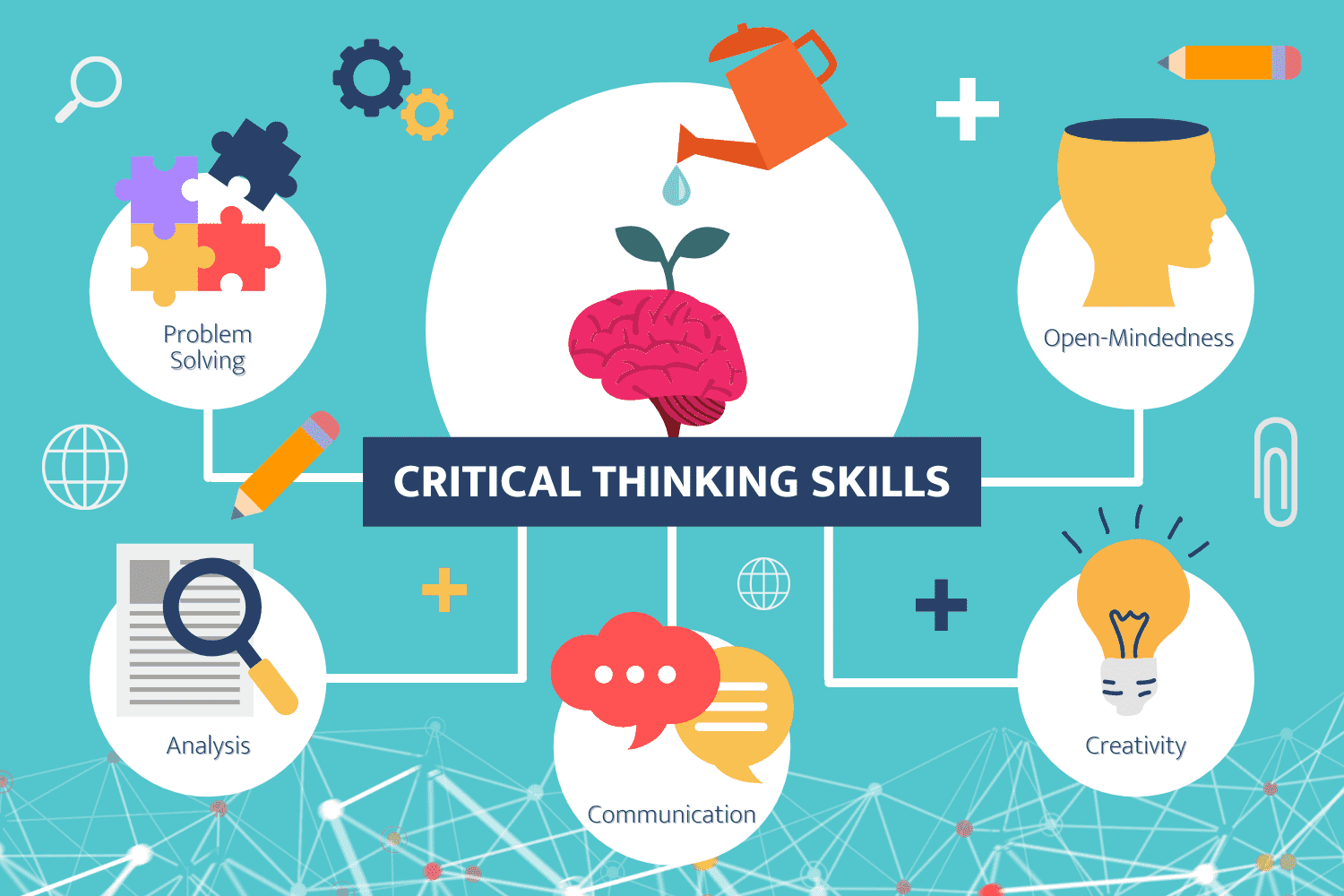In an era defined by rapid change, information overload, and complex global challenges, critical thinking has become an indispensable skill for students. It enables them to analyze information objectively, make informed decisions, and solve problems effectively. As education shifts from rote memorization to fostering analytical and creative abilities, critical thinking lies at the heart of student development. This article explores essential techniques for cultivating critical thinking skills in students, emphasizing their importance for academic success and life beyond the classroom.
What is Critical Thinking Skills?
Critical thinking is the ability to think clearly, logically, and independently. It involves questioning assumptions, evaluating evidence, and reasoning systematically to arrive at well-informed conclusions. Key components of critical thinking include:
- Analysis: Breaking down complex ideas into smaller parts to understand their relationships.
- Evaluation: Assessing the credibility and relevance of information.
- Inference: Drawing conclusions based on evidence and reasoning.
- Problem-Solving: Identifying solutions through logical thinking and creativity.
- Reflection: Reviewing and refining one’s thought processes and conclusions.
Why is Critical Thinking Important for Students?
Critical thinking is essential for success in today’s interconnected and information-rich world:
- Academic Achievement: It enhances students’ ability to understand concepts, evaluate arguments, and apply knowledge across disciplines.
- Decision-Making: Critical thinkers make informed decisions by weighing evidence and considering multiple perspectives.
- Problem-Solving: It equips students with the skills to tackle real-world challenges with creativity and confidence.
- Career Readiness: Employers value critical thinking for its role in innovation, teamwork, and effective communication.
- Lifelong Learning: Critical thinking fosters intellectual curiosity, adaptability, and resilience.
Techniques for Developing Critical Thinking Skills
Educators play a vital role in fostering critical thinking by incorporating specific strategies into their teaching practices:
1. Encourage Questioning
- Socratic Questioning: Use open-ended questions that challenge students to think deeply and articulate their reasoning.
- Examples:
- What evidence supports this claim?
- How would you approach this problem differently?
- What are the possible consequences of this decision?
2. Promote Active Learning
- Collaborative Activities: Group discussions, debates, and peer reviews encourage students to evaluate diverse perspectives.
- Hands-On Projects: Problem-based learning (PBL) and case studies provide opportunities to apply critical thinking in real-world scenarios.
3. Incorporate Critical Reading and Writing
- Critical Reading: Teach students to identify bias, analyze arguments, and evaluate sources in texts.
- Analytical Writing: Assign essays or reports that require students to construct and defend well-reasoned arguments.
4. Use Real-World Problems
- Present students with authentic, complex problems that require analysis, creativity, and decision-making.
- Example: Analyze a current global issue (e.g., climate change, economic inequality) and propose potential solutions.
5. Integrate Technology and Digital Tools
- Online Resources: Use digital platforms to engage students in interactive problem-solving activities or simulations.
- Critical Media Literacy: Teach students to evaluate online content, identify misinformation, and verify sources.
6. Foster Reflection
- Encourage students to reflect on their learning experiences, thought processes, and conclusions.
- Use journals or reflection prompts to help students analyze their successes and areas for improvement.
7. Model Critical Thinking
- Demonstrate critical thinking during lessons by verbalizing your reasoning process.
- Show how to question assumptions, evaluate evidence, and approach problems systematically.
Examples of Critical Thinking Activities
- Debates and Discussions:
- Students take opposing sides on an issue, defend their positions, and respond to counterarguments, fostering analysis and persuasion skills.
- Hypothetical Scenarios:
- Present “what-if” questions (e.g., “What if renewable energy replaced fossil fuels worldwide?”) to stimulate creative problem-solving.
- Mind Mapping:
- Use visual tools to organize and connect ideas, helping students see relationships between concepts.
- Role-Playing:
- Assign roles in historical, ethical, or scientific dilemmas to encourage empathy and perspective-taking.
- Critical Analysis of Media:
- Analyze advertisements, news articles, or social media posts for bias, intent, and reliability.
Overcoming Barriers to Critical Thinking Development
Despite its importance, fostering critical thinking can be challenging due to various barriers:
- Fixed Mindsets: Students may resist questioning established beliefs or stepping outside their comfort zones.
- Overemphasis on Standardized Testing: Rote memorization and standardized assessments often overshadow critical thinking in traditional classrooms.
- Lack of Time: Teachers may struggle to incorporate critical thinking activities into already packed curricula.
Strategies to Overcome Barriers:
- Cultivate a Growth Mindset: Encourage students to view challenges as opportunities for growth rather than obstacles.
- Integrate Critical Thinking Across Subjects: Embed critical thinking activities in all disciplines, from math to literature.
- Balance Assessment Methods: Use formative assessments, projects, and portfolios to measure critical thinking alongside traditional tests.
The Role of Teachers in Developing Critical Thinking
Teachers are instrumental in creating an environment that nurtures critical thinking:
- Facilitators of Learning: Act as guides rather than information providers, encouraging students to explore and question.
- Creators of Safe Spaces: Foster an inclusive, respectful classroom where students feel comfortable sharing ideas and taking intellectual risks.
- Continuous Learners: Stay updated on new teaching strategies and technologies that support critical thinking development.
Benefits of Critical Thinking Skills for the Future
1. Empowered Decision-Making
- Critical thinking enables students to analyze situations, weigh options, and make informed choices in their personal and professional lives.
2. Adaptability
- In a rapidly changing world, critical thinkers can adapt to new challenges and thrive in diverse environments.
3. Innovation
- By challenging norms and thinking creatively, critical thinkers drive innovation in science, technology, arts, and more.
Conclusion: A Skill for Lifelong Success
Critical thinking is a cornerstone of education that empowers students to navigate complexity, solve problems, and contribute meaningfully to society. By incorporating questioning, active learning, real-world problem-solving, and reflective practices, educators can cultivate this essential skill in students. As we prepare learners for the demands of the 21st century, fostering critical thinking ensures they are not only knowledgeable but also capable of thoughtful, informed, and innovative action in an ever-evolving world.
